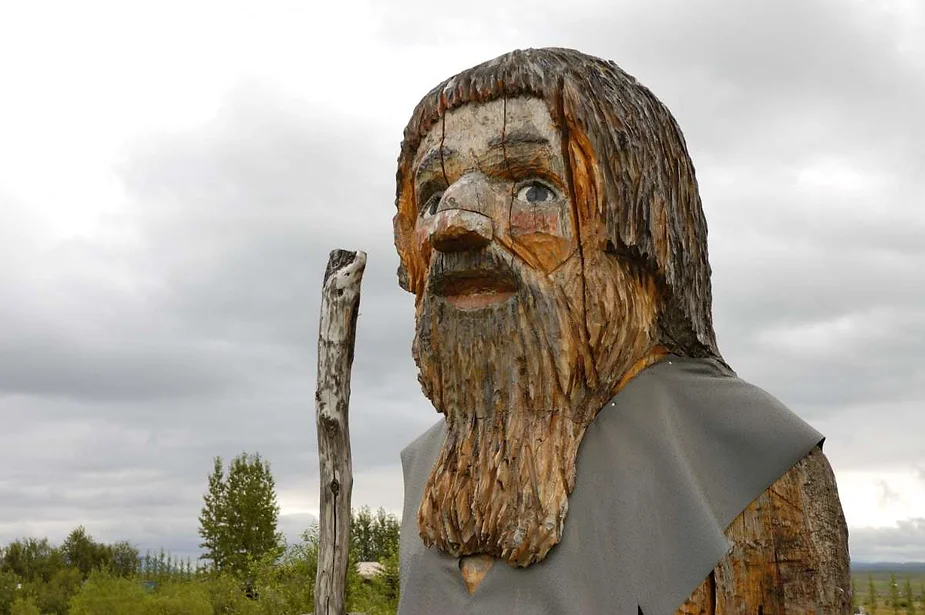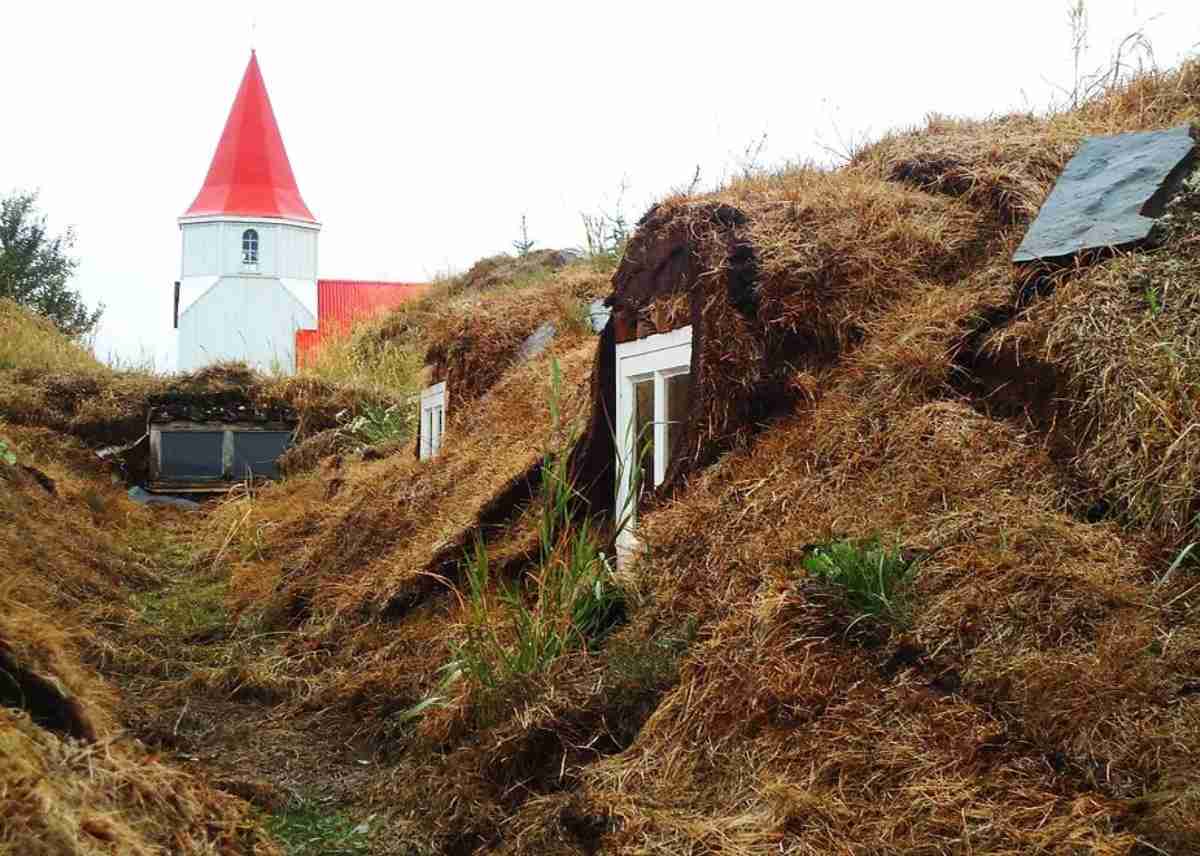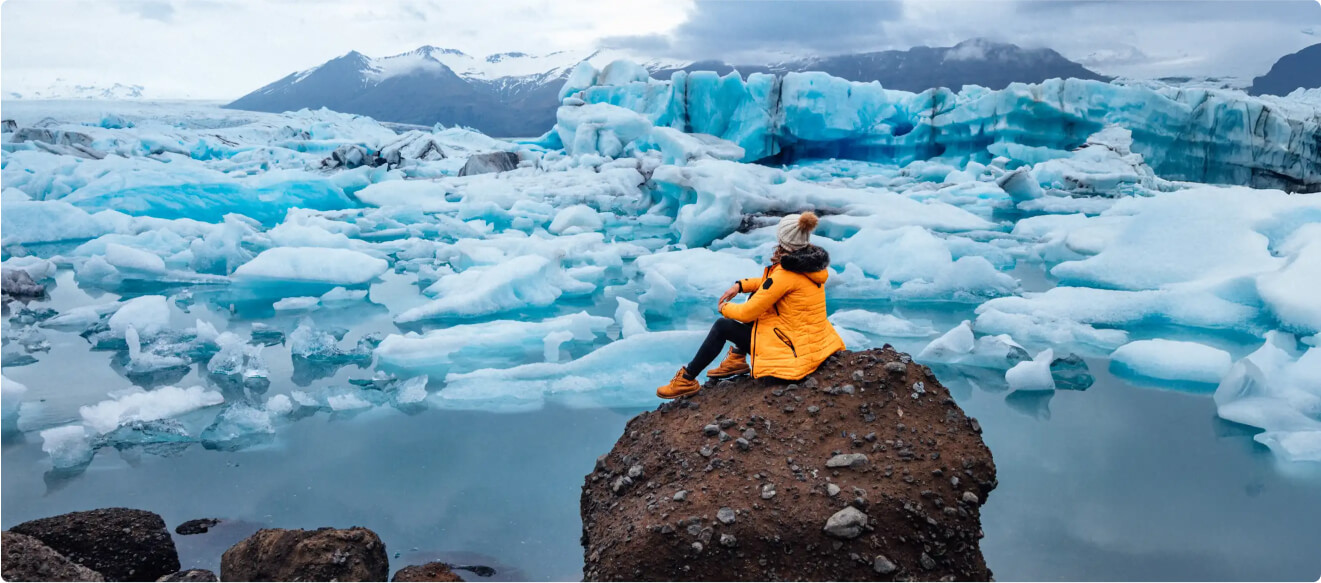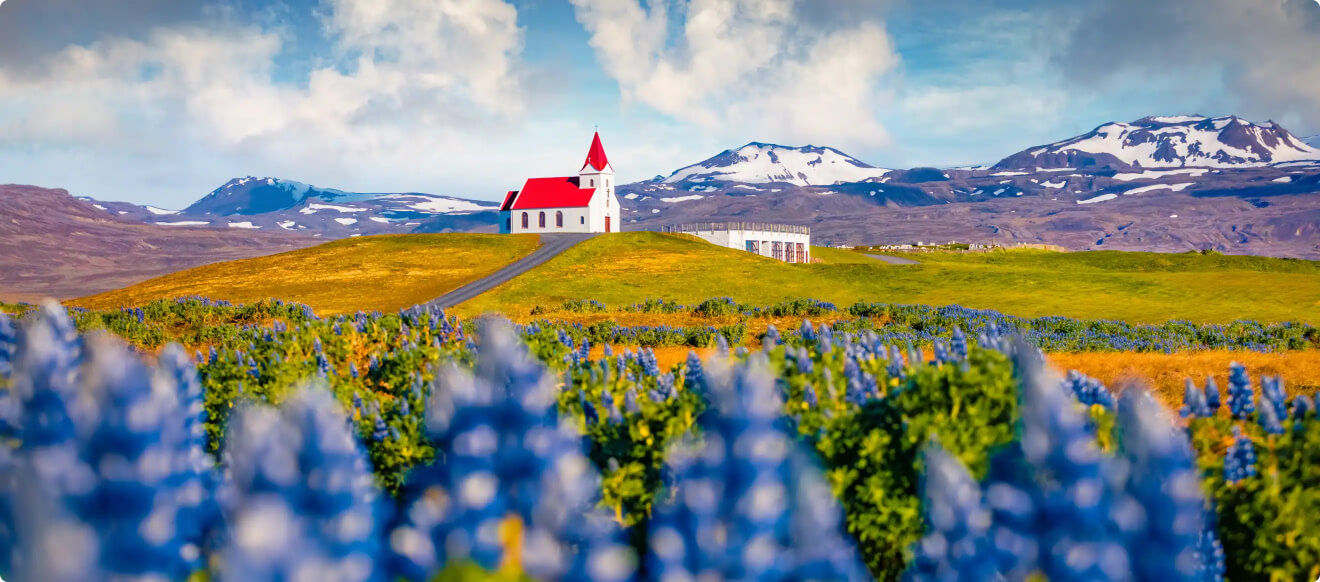Iceland is filled with legends and all sorts of mythical creatures. None of them are more infamous than the Iceland elves. But what exactly are the stories behind these magical folk, do the Icelanders really believe in them, and do they actually exist? We discuss all this and more in this article.
What are Iceland Elves?
In Icelandic and Faroese lore, Huldufólk, or 'hidden people,' are mystical elves. Resembling humans, they inhabit a parallel realm within nature, choosing when to become visible.
Huldufolk vs. Icelandic Elves
So, the Icelandic elves are not as clear-cut as the understanding movies like Lord of the Rings bring to the table. Although these two terms are used interchangeably these days, there is a difference.
Elves referred to as "Alfafolk" by locals are almost what you picture in your mind and what your Christmas Elf-on-a-Shelf looks like. The pointy ears, pointy shoes, even a little bell jingling on top of its pointy hat. But under the umbrella term of an elf lies a variety of sub-categories, and are often accompanied by other magical creatures (more on this later).
Huldufolk, meaning “hidden people”, are believed to look and act a lot as we do. Except for the fact that they are supernatural beings who live in a parallel world…and are taller… skinnier… and more beautiful… you get the picture.
The Icelandic hidden people have a pretty interesting origin story (and should serve as a lesson to any children disputing bath time).
According to the Icelandic hidden people legend, Eve (yes, that one) was awaiting a visit from God almighty himself. Yet, she found herself ill-prepared, as a number of her children were dirty and unwashed. For some strange reason, the most logical solution was not to rush them to the tub, but to hide them. When God found out, he was furious and cursed the dirty children, stating, “that which you hid away from me shall be hidden from all!”
Although there clearly is a difference between Huldufolk and elves, no local is going to bat an eye if you use one word for the other.

The Various Elves & Other Mythical Creatures in Iceland’s Culture
To distinguish between the various types of elves in Iceland, you’ll almost need a dedicated guidebook. Iceland is a country that rich in its mythology, it has plenty of prominent folklore figures. Below, we’ve outlined some of the most notorious of these magical beings:
Iceland Folklore Elves
Experts claim there are more than 50 different types of elves living in Iceland. But there is a clear divide between them though: the Light Elves (Ljósalfar) and the Dark Elves (Dökkalfar). According to folklore, the Light Elves live in Elf World (Alfheimar) whilst the Dark Elves live underground.
They also differ in looks and personalities. The Light Elves are fair in complexion and shine brighter than the sun. The Dark Elves are said to be darker than the pitch-black darkness of the night.
Iceland Christmas Elves
According to legend, there are thirteen Christmas Elves called the Thirteen Yule Lads. They are all the sons of Leppaludi and Gryla. The latter creature comes from the mountains and boils naughty children at Christmas. They both come out every year on December 12th to announce the beginning of Christmas in Iceland.

This thirteen reminds one of Snow White’s dwarfs, each with their own personality. Except that these guys are the ultimate mischief-makers and pranksters. The thirteen Yule Lads consist of:
-
Sheep-Cote Clod – he tries to suckle the milk from farmers’ sheep.
-
Gully Gawk - he steals the foam off the top of the fresh cow milk in their buckets.
-
Stubby - as the name suggests, he is short and stubby and steals food from frying pans.
-
Spoon Licker – once again, the name is right on the nose: he licks spoons.
-
Pot Scraper or Pot Licker – if it wasn’t so unhygienic, this guy’s pranks might’ve actually been welcome, since he licks unwashed pots clean.
-
Bowl Licker – he steals the food out of the bowls under one’s bed. This makes more sense when you know Icelandic people used to store bowls of food under their beds, don’t ask us why.
-
Door Slammer – he stomps around and slams doors at the most inconvenient times, especially while everyone is trying to sleep.
-
Skyr Gobbler – he gobbles up all the Icelandic yogurt (called Skyr).
-
Sausage Swiper – he sounds like a character from Dora the Explorer and this sausage-stealing elf would’ve fit right into a kid’s cartoon.
-
Window Peeper – he’s not quite as perverted as he sounds. He merely creeps around outside and sometimes steals some of the things he sees inside if the opportunity strikes.
-
Door Sniffer – this guy has a huge nose and can’t say no to stealing delicious baked goods.
-
Meat Hook – he might sound like something from a horror movie, but this guy merely steals any leftover meat and has a special affinity for smoked lamb.
-
Candle Beggar – don’t be fooled, there’s no begging involved. He blatantly just steals candles (something that was highly valued back in the day).
Iceland Trolls and Elves
Another mystical entity that often comes up when discussing elves is trolls. But where elves are supernatural, ethereal beings, trolls have physical bodies. In other words, where elves are invisible, trolls are very visible.
Also, where the Iceland elves are highly intelligent and extremely territorial beings, trolls are like the black sheep of the mythical creature family. They are believed to be idiotic, so even though they can perform magic and cast spells, they often botch things up due to their stupidity.

They are said to live in caves and lure in humans, so they can feast on their flesh. Luckily, it seems like they prefer disobedient children (spread the word, parents). Trolls also have an Achilles heel; they can only survive in the darkness. If they are ever caught by the sunlight, they are turned into stone.
Many popular tourist attractions across the island serve as a testament to this. Such is the case of the Reynisdrangar Rock Formations.
Iceland Fairies and Elves
Iceland also has the typical fairies that everyone is used to around the world (think Peter Pan’s Tinkerbell). However, they don’t play such a prominent role on the island and all in its stories. The other interesting thing about fairies is the fact that they are mostly female.
Does Iceland Believe in Elves?
One might be tempted to assume that the Iceland elves are similar to Santa Claus. It is also a nice story, and tradition, and one parents can use to keep their kids in line. But when one looks at the official studies by the University of Iceland and what percent of Iceland believe in elves (62%!), it is clear that the majority of Icelanders believe in elves.
What’s even more interesting is that these statistics show an increase from the study done in 1998. In that research, 54.4% of Icelanders stated that they are true believers when it comes to the elves in Iceland.
Past Beliefs Enforced by Modern Occurrences
Evidently, Iceland’s elves belief goes much deeper than just historical tales and keeping the Icelandic culture alive. In fact, stop to have a chat with any Iceland road worker or construction worker working in what’s said to be elf territory. They will tell you many stories of so-called bad luck, mishaps, and apparent sabotage.
One of these legendary testimonies comes straight out of the 1930s and tells the tale of Elf Hill in Iceland. Attempts were made to build a road through a rock known as Elf Hill in the south of Kopavogur. Despite numerous efforts, all attempts were futile due to unexplained occurrences.

In the 1980s, the project was relaunched (because who believes these old wives’ tales, right?) Well, the project had to be abandoned yet again, and ever since workers have refused to go anywhere near the site.
Another incident was as early as 2016. A mudslide on a road in Siglufjördur had to be cleared. Workers sprung into action and unwittingly ended up dumping soil on what is locally known as Iceland’s Elf Rock.
The moment the rock was covered, the town and workers felt the wrath of elves via unexplained natural disasters and other incidents. The situation was so serious that once Elf Rock was cleared, the town council met and decided to put up signs and markings. This was done just to ensure that something like this never occurs again.
A last incident worth mentioning occurred in 2013. Iceland’s supreme court halted a highway project near Reykjavík because it would disturb a protected area and “elf habitat”. The “elf habitat” consisted of an almost 4-meter-long jagged rock that is believed to be an elf church in Iceland. To be more precise, it is a chapel for the “hidden folk”. Roadwork could only start again once the “church” was safely relocated.
“Proof” That Elves Really Exist
Most of the proof that Iceland elves exist are the accounts told by locals. Whether they experienced it for themselves, or are simply passing on stories relayed to them. You just need to ask “are Icelandic elves real?” in your nearest pub to get the tongues wagging.
Another form of Iceland elves sightings is spotting some of the Iceland elves houses that can be found all over the island.
Where do the Elves Live in Iceland & How to Find/See Them
It is generally believed that elves in Iceland can be found in the rocks, lava fields, and hills of the island, so keep your eyes peeled in these areas. But if you need a little local help, we suggest you book your spot on an elf tour in Iceland.
During these tours, you will be given the chance to go to some of the most promising elf-spotting spots. The guide will then entertain you with all sorts of general elf information such as what do elves in Iceland look like and interesting folklore.

If you want to really do a deep dive into the Iceland elves and the Icelandic hidden people, you need to enroll at the Elf School in Iceland. If you’re ever in the capital of Reykjavík, we highly recommend that you attend – the school has raving reviews from visitors.
Another way to learn more about the island’s elf population is by visiting the Elf Museum in Iceland (one of the best Iceland museums). Here, you’ll get a new appreciation for how intricately Iceland’s mythology and its natural wonders are woven together.
Interesting Iceland Elves Facts
Want to find out more about these intriguing creatures living on the island? Here are a few interesting Iceland elves facts:
-
Mentions of the Iceland elves can be found in some of the early Icelandic language works - Viking poems that date back over 1000 years ago!
-
It is believed the Huldufólk really enjoy their coffee, whilst elves are not big fans of the refreshment.
-
Apparently, the smallest elves clock in at around just 8 centimeters.
-
Ever wondered what a day in the life of an elf looks like? Well, it doesn’t seem like it’s too different from our own. Apparently, they keep livestock, pick berries, cut hay, and do many other activities that contribute to their society’s economy.
-
It is believed that certain elves may move into people’s houses. But don’t worry, this is not the same situation as the territorial disturbances caused by workers. If you treat the elves with respect, they are perfectly harmless.
-
Nowhere else in the world have elves inspired an actual ecological movement. There are literal organizations and protesters actively campaigning against the development of certain areas of the island due to the inhabitants of the elves.
-
Forget about Santa Claus – in Iceland, you leave out food for the elves during Christmas. You also need to ensure that the house is neat and tidy. This way, the elves have enough space to dance around whilst the family living in the house attends the Christmas church service. Also, whilst most of us are partying the night away, it is believed that during the New Year’s Eve in Iceland, the elves’ are on their annual moving day. So, it’s not strange at all for locals to light a few candles to help them on their way to their new residence.

To Believe or Not to Believe…
The belief in Iceland elves are not going anywhere anytime soon (especially not if they have a say in it). But the best way to make up your own mind is to experience the island and its supposed magical creatures for yourself. Rent a car in Iceland and make a road trip out of your elf research.
Just remember to have a chat with your rental agency regarding your itinerary and routes. Certain roads can only be accessed via a 4x4 vehicle in Iceland! And who knows, you might end up being one of the people in the local pub sharing your unbelievable experience.




















